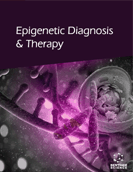Abstract
Adolescence presents a critical opportunity to support the development of healthy patterns of behavior and prevent future health problems. Unfortunately, there is not yet a well-developed prevention model that allows pediatricians to initiate and monitor prevention efforts for the substantial minority of individuals who engage in risky behavior during adolescence. We suggest that recently developed epigenetic technologies may provide a bridge to a new prevention paradigm in which pediatricians screen for indicated smoking prevention services. Specifically, since currently available tobacco use screening measures are insensitive to low levels of use, newly developed methylation based approaches may enhance the sensitivity of the initial screening for nascent smoking behavior as well monitoring of outcomes. We conclude that the incorporation of Next Gen screening technologies into standard pediatric evaluations may allow for more effective referral to prevention programming for tobacco use. In addition to the potential direct impact on long-term enhancement of health outcomes secondary to smoking prevention, well-established links between smoking and other risk behaviors suggest that expanded referral for nascent smoking may also create opportunities to address other risky adolescent behaviors, and so decrease several interrelated drivers of long-term health care costs.
Keywords: Aryl hydrocarbon receptor repressor, cotinine, DNA methylation, pediatrics, smoking prevention.
Graphical Abstract
 41
41

